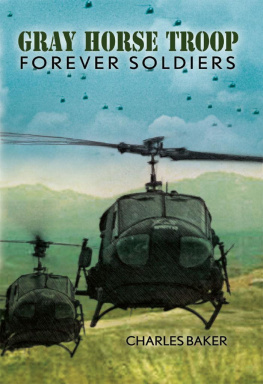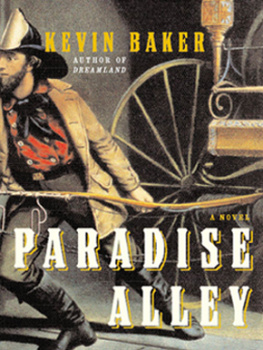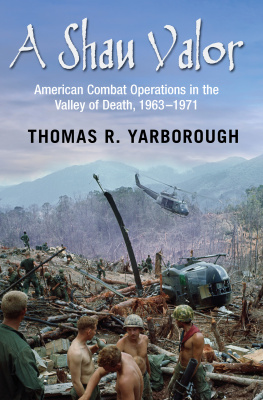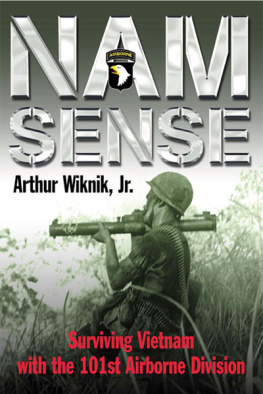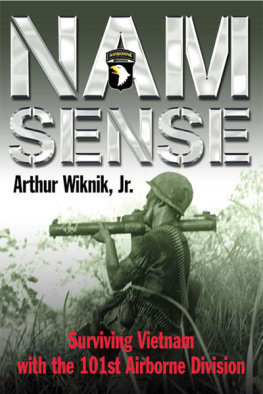


GRAY HORSE TROOP/Forever Soldiers By Charles Baker
Copyright @ August 2012 by Charles Baker
Registration # TXu 1-825-221
All rights reserved. No part of this book may be reproduced or transmitted in any form or by any means, electronic or mechanical, including photocopying, recording, or by any information storage and retrieval system, without permission in writing from the copyright owner.
Published by Charles Baker & Associates, Inc., dba Powder River Publications October 2013
ISBN: 978-0-9888111-0-2
Cover and Layout by Gamel Design.
Maps, diagrams and illustrations by Charles Baker.
Photographs mostly from Charles Baker, some with permission of fellow veterans, and some from the public domain.
Second Revision September 2014.

TABLE OF CONTENTS
FORWARD
This is a personal account about the Vietnam War, not a scholarly work by a "military historian." Even so, it is accurate in terms of the big picture the missions, plans and operations for the day. The sources for these matters are the Daily Journals and summaries, the writings of others, conversations with many of our veterans, as well as my personal records and vivid memories of memorable days. One thing I discovered along the way talking to five guys about a battle results in at least three different battles. Therefore this book is told from the perspective of a battalion operations officer who was down with the rifle companies on difficult days, and otherwise not far away.
This accounting also relies on the citations on individual awards for valor to help piece together the battles and skirmishes Bronze Star (V) and above. In the northern sector of South Vietnam, the war escalated dramatically in the fall of 1967, and stayed that way for two years. There were many award recommendations. There needed to be. Recommendations went back to the rear on pages torn out of our little green notebooks, often wet, poorly written, very sketchy. Finalized paperwork did not flow immediately back to the field for review and approval during the Battle of Hue Tet 68, Khe Sanh and the A Shau Valley. Initiators were not always there. Officers rode out on medevac birds, or rotated out to new jobs. The clerks in the S-1 shop did the best they could writing these citations. Many veterans with whom I have spoken regarding their award start off with "well, that's not exactly what I did."
Nevertheless, the main battles always involved several medal recipients, and the write ups collectively capture what happened that day. The recipients more than earned these awards. There could have been a lot more. People got missed.
Thirty-seven years later, this author traveled for several weeks with the same unit in Iraq. A lot has changed. A lot remains the same. Comparisons are sprinkled throughout this work.
Charles R. "Charlie" Baker


It was 21 July 2004. (That's how we write dates in the Army.) A large number of dignitaries sat beneath the canopy of the reviewing stand, including several retired generals, the 3rd Infantry Division Commander, and many retired veterans of the Vietnam War. Ft. Stewart, Georgia, was a hot and dusty place that day, just the kind of dusty old Army Post that dusty old soldiers love.
Facing the reviewing stand on the far side of the parade ground stood a line of company formations the five companies of the 1st Battalion, 3rd Air Defense Artillery along with the 3rd Infantry Division Band. Centered on these six units was the color guard. The four color bearers held the United States Flag, The US Army flag, The 3rd Air Defense Artillery flag, and one uncased flag in a canvas cover.
The men of the 1st Battalion, 3rd Air Defense Artillery, looked sharp in their dress greens and black berets. (We say 1/3 ADA, for short.) Many of them had seen action with the battalion on the dusty road to Baghdad in March of 2003. No enemy aircraft showed up when the 3rd Infantry Division went through the berm into Iraq on March 20th, and it was not long before 1/3 ADA received an alternate mission to operate as an armored reconnaissance unit. Up around the Euphrates River, they took their turn at the point of the spear for the 3rd Infantry Division.
The legendary 3rd ID, "Rock of the Marne." Audie Murphy and all that. 1/3 ADA was one of the battalions that reached the center of Baghdad on 9 April 2003 when the statue of Saddam came down. Several of the men standing on the field this day had experienced real combat action during the brief but intense movement to contact operations into Baghdad. This was a proud unit indeed, about to have its colors replaced by another flag.
The battalion commander and his staff came to attention, marched across the field to a position in front of the color guard, and faced about. He was a cavalry officer, not an air defense officer, and had taken command of the battalion only three months earlier. He proudly wore his tanker boots, and the silver spurs he had earned as a young lieutenant in the cavalry. This parade on Cottrell Field was being conducted in the traditions of the cavalry, with the commands being given by signals from the bugler.
The 5th Battalion 7th Cavalry Vietnam Veterans Association, with more than a thousand members, had been contacted in March of 2004 by the new commander, Lt. Col. Petery. Word about the Reactivation Parade had spread throughout the association. Many of the most active members flew in from across the country. It had been thirty years in mothballs for their unit.
Following the battalion adjutant's preparatory command "Colors Front and Center", the bugler sounded the command of execution with one sharp note, prompting the band to play, and the Commander, his staff and the six-man color guard to step off. They looked sharp as they marched across the field toward us and halted in front of the reviewing stand. The 1st Brigade Commander and Colonel (Retired) John Long, President of our battalion Vietnam Veterans Association moved forward and took their positions to pass the flags. The red artillery flag was furled and put into an olive drab canvas case. The yellow cavalry colors, topped by many campaign ribbons, came out of its canvas case, was unfurled and handed to John Long. He passed it to the Brigade Commander, who passed it to the battalion commander. At that moment, all the men standing formation on Cottrell Field would be cavalry troopers in 5th Squadron, 7th U.S. Cavalry, whether they liked it or not. (5/7 Cav for short.) The 5/7 Cav would be a cavalry squadron, rather than an infantry battalion this time around. The troopers would have the option of retaining their air defense specialty, but make no mistake they would be trained and fight as cavalry troopers in Iraq in 2005, whether they liked it or not. The Volunteer Army. You volunteer at the enlistment office. Everything is mandatory after that.
Next page
